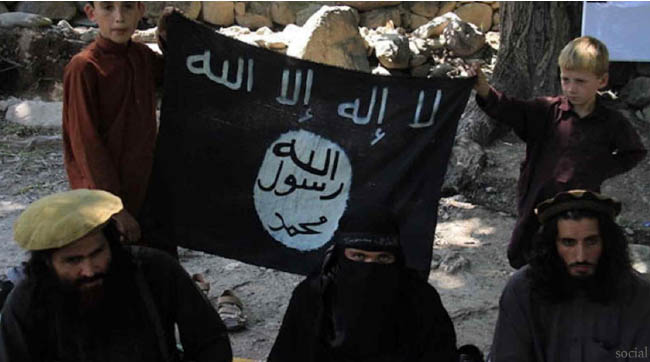The self-styled Islamic State in Iraq and Syria (ISIS) emerged in Iraq and extended its reach in Syria. Losing ground recently, this group seeks safe havens in other parts of Islamic countries. Afghanistan, Libya and Sudan loom a primary focus for the ISIS group. Considering the presence of al-Qaeda and Arab militants in Afghanistan previously, the eastern part of this country is overwhelmed by the volume of potential terrorism plots. However, Afghanistan is not likely to turn to Iraq or Syria due to some particular circumstances.
The belief that the Taliban seek to strip off the followers of other sects has been too exaggerated. Although during the takeover of Mazar-e-Sharif in 1377 Afghan calendar, those who lost their lives were Shiites, yet there are two issues to be taken into account: First, their attack was out of revenge following their defeat, in which Hezb-e-Wahdat played the crucial role. Second, foreign members of the Taliban – who treated other sects very harshly and currently allied themselves with ISIS in Iraq and Syria – were reportedly in the front-line.
The Taliban did not claim the responsibility of attacking Shiites in organized way, either. For example, a radical Pakistani group claimed the responsibility of the bloody incident of Kabul in Ashura in 1390 and Taliban, further, condemned the suicide attack on Enlightenment Movement through issuing a statement and attributed this attack to the groups that seek to fuel sectarianism. One of the high-ranking Taliban members Mawlavi Makhdum Abdul Salam, who is also a member of the Taliban’s recruiting commission in eastern Afghanistan, maintained that the emergence of ISIS group in the region is damaging for Muslims. The view to eliminate the followers of other religion in Islamic countries through violence and conflict is an illusion. No elements will be able to strip off a sect from the surface of the earth. The masterminds behind the scene are most likely of the view to sow the seeds of discord in Islamic countries. To cut it short, one of serious distinctions between the Taliban and ISIS depends on religious conflict – the issue that the ISIS pursues strongly and allocated two editions of their official journal for justifying Shiites’ murder. There are conflicting views in this regard between ISIS and al-Qaeda since Abu Bakr al-Baghdadi believes that Shiites are infidel, whereas Ayman al-Zawahiri denies this claim. There are also many other reasons behind the hostile relationship between the Taliban and ISIS.
According to the Taliban, ISIS is a rebellious group that has refused to obey Emir-ul-Momineen (the commander of the faithful) but ISIS believes that the Taliban did not pledge allegiance to the caliph – this is also noticed in letters exchanged between the two groups. As a result, the Taliban warned al-Baghdadi through a letter not to let ISIS step in Afghanistan, or else he has to await the consequence. On the other hand, an offshoot of ISIS declared in a statement issued in four languages that all Mujaheed forces should gather under a single flag and leadership and there is no need for the Taliban’s presence.
The Taliban possess wealth and power in eastern and southern parts of Afghanistan. The emergence of ISIS will reduce their power. Additionally, ISIS will consider the country’s mineral resources and narcotic drug as financial support for war, which will not be acceptable for the Taliban. So, the groups are strong opponents.
ISIS has adopted a global approach vis-à-vis its militant activities and could establish a radical network around the world via its deceptive slogans. However, the Taliban intends to re-establish an Islamic Emirate in Afghanistan and fight for the withdrawal of foreign forces from this country. Ruling Afghanistan for years, it was proved that the Taliban nurtured ethnic and national tendencies.
The conflict about the sources of wealth and power in Afghanistan is based on ethnic and local tendencies rather than religious ones. Therefore, the overwhelming numbers of ISIS group are the former Pakistani Taliban that have pledged to this group recently. There are also some members of Afghan Taliban – who nurtured a conflicting idea with the Taliban over financial or ideological issues – with ISIS and also radical groups from Uzbekistan and Tajikistan.
NATO has reported that seventy percent of the ISIS group that is operating in Afghanistan belongs to former militants of “Tahreek-e-Taliban Pakistan” previously resided the “Orakzai” tribal belts in Pakistan. The NATO’s General Secretary in Afghanistan maintained that the bulk of ISIS group in this country belongs to Pakistani Taliban who escaped the border following the operation Rad-ul-Fasad launched against the Taliban by Pakistani military. He added that “Uzbekistan Islamic Movement (UIM)” also associated with ISIS.
To sum up, the ISIS struggles to spread horror and terror across the country. The fact is that both the Taliban and Afghan government deem ISIS as a threat. So, no bright future is imaginable for ISIS.
Furthermore, it is hard for ISIS to capitalize on fueling sectarianism in Afghanistan as it did in Iraq and Syria. This group might have gained foothold in some parts of the country as a result of Salafis and Wahhabis’ preaches but will soon meet failure. After all, their clandestine activities carried out for sparking off religious conflicts – which were one of the main reasons behind its influence in Iraq and Syria – should not be ignored.
Home » Opinion » A Glance over Taliban-ISIS Relationship in Afghanistan
A Glance over Taliban-ISIS Relationship in Afghanistan
| Ghulam Ahya Hussaini

